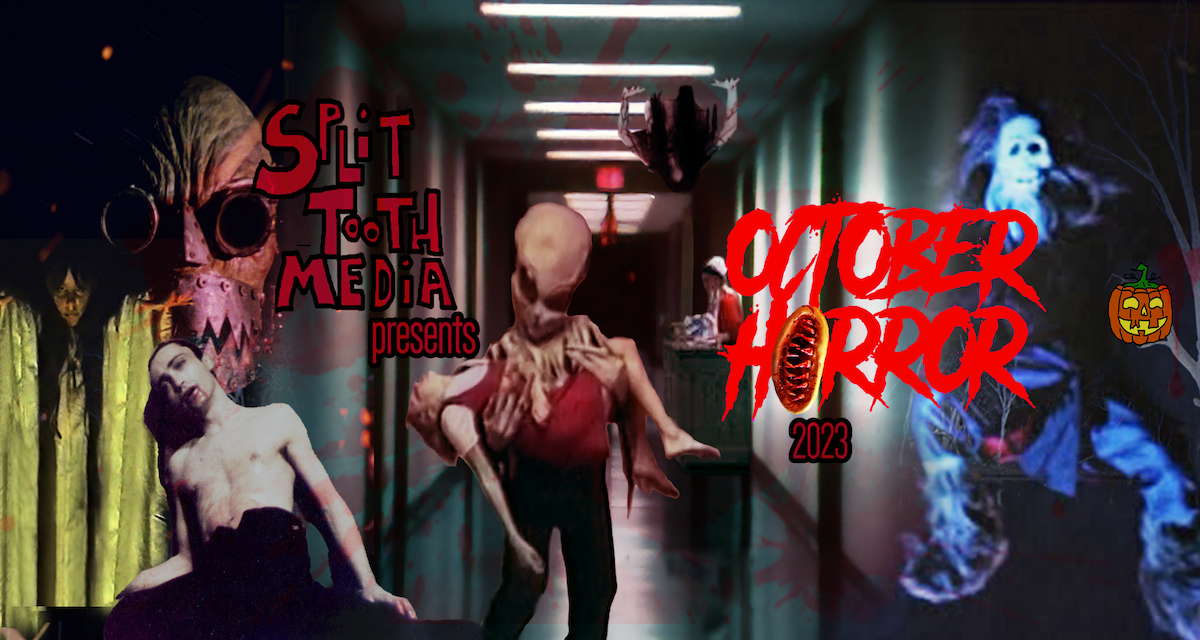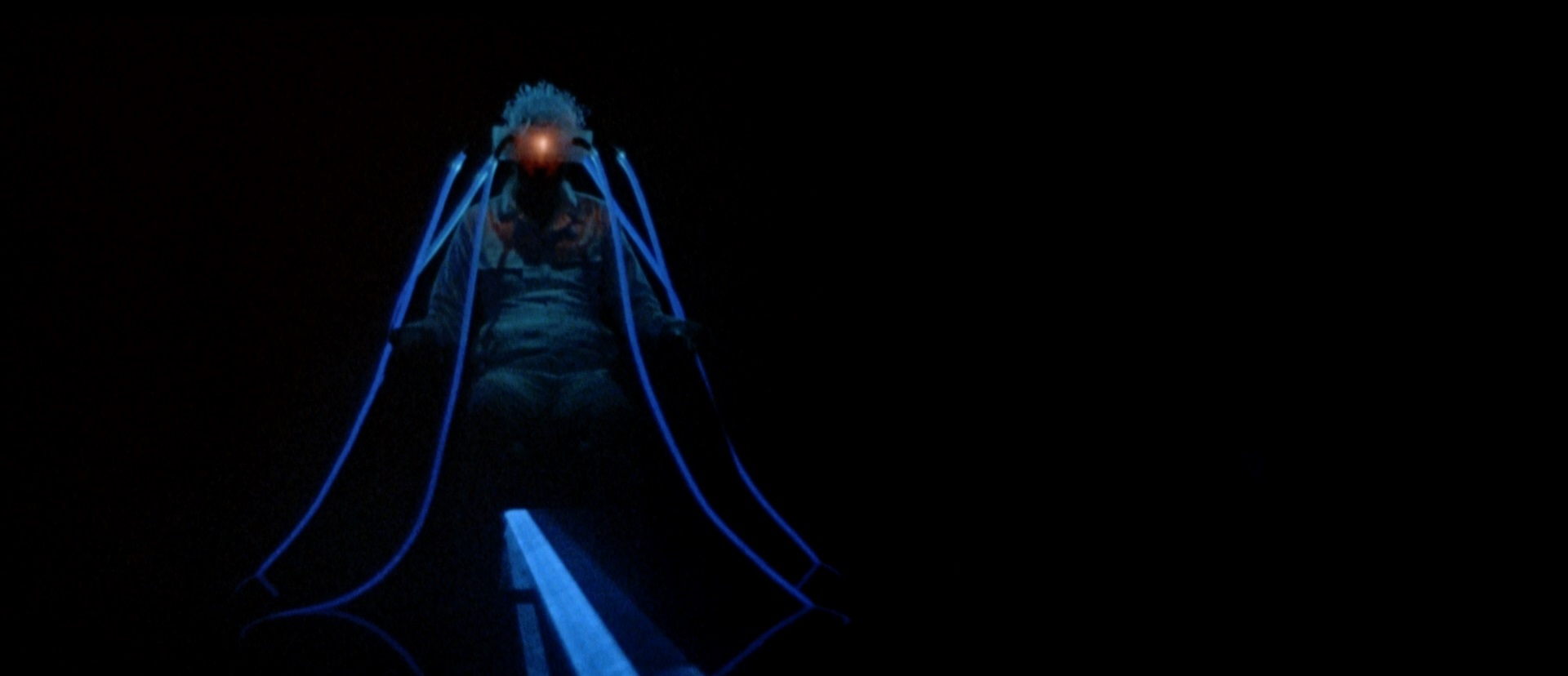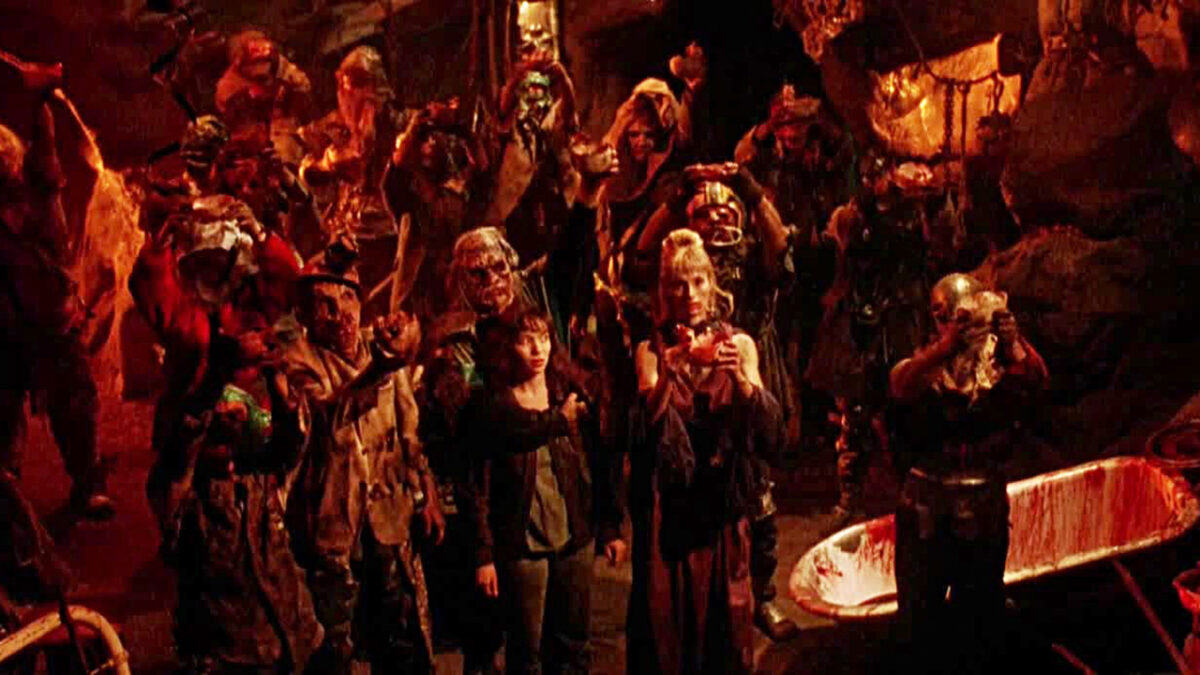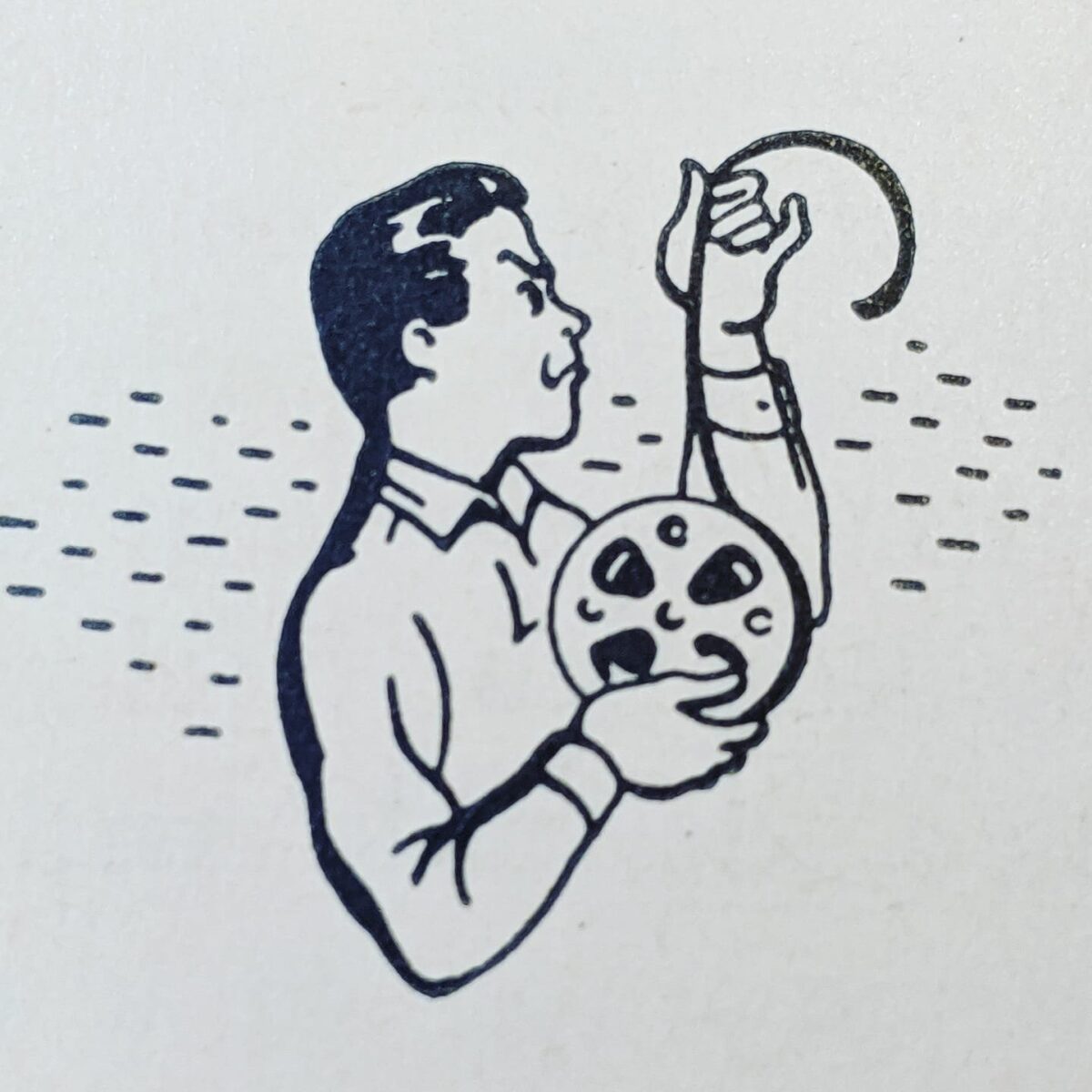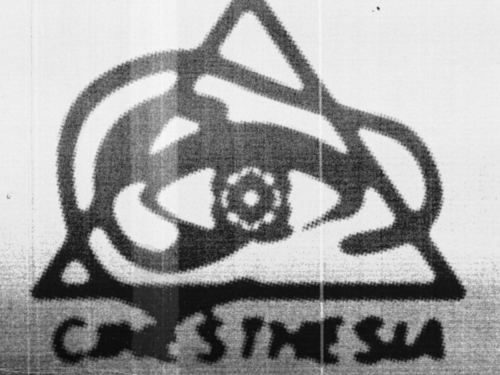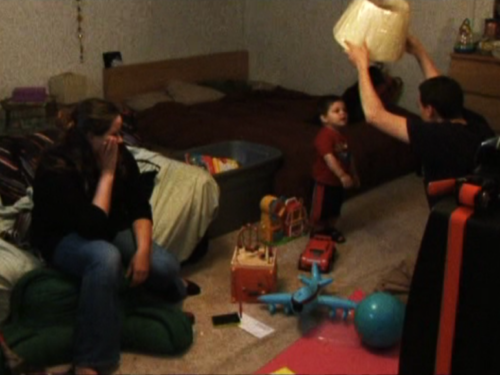Produced by Fangoria, Mindwarp advocated for the freedom of fictional renderings of violence at a time when censors were eager to draw lines between real and imaginary horrors
The biologist John Calhoun was fascinated by the social hierarchies of the rodent kingdom, and when he began to build habitats for his specimens in the late 1940s, it was inevitable that his observations, particular as they were to rats and mice, would resonate with the operations of others societies, animal or human, in measuring how populations grow, regulate themselves, and collapse. In 1968, Calhoun built a mouse utopia that would witness a rapid development, overpopulation, and a horrific decimation arising from violent behaviors, willful isolation, and the decline of mating. Essentially, it was a decline of fellowship, a concept which, once imposed on critters, closed the distance between man and mouse. Calhoun concluded that his studies were a metaphor for the human race: Facing its own rapidly expanding population and the decay of its burdened cities, he recognized a “behavioral sink” of aberrant actions that came in response to density and overcrowding. The rodents who passively withdrew from this circus he called “beautiful ones.” They were models of self-preservation: shunning social interaction, grooming themselves. This, in itself, was an image of doom.
Calhoun had observed a cataclysm: he designed a world and watched it end. In dystopian science-fiction, the cause of an apocalypse is mere decoration around the creation of a new world, a post-apocalypse; such worlds serve as allegories in response to the same queries that Calhoun and his peers had about the dangerous transformations of society through overcrowding, through energy crises, through ideological conflict. What made these wastelands? The circumstances and causes are often less important than the dramas that play out within them. Those dramas are, like all fables and quests, handed down: even in the act of handing down a story to an imagined future, speculative stories become identified with our long-held firmament of myth. Loners, refugees, men without names tour vast deserts and the molted shells of cities in search of fellowship long after fellowship has vanished. They survive in the behavioral sink, toilet basins of rapists and scavengers, and like H.G. Wells’s fantastical future, this primeval regression has its counterpoint, its beautiful ones preserved, Eloi to the Morlocks.
In Mindwarp (1992), the beautiful ones occupy a biosphere habitat that, like Calhoun’s, has been made for them: they recline in machines that help them dream lucid fantasies, sheltered from the unknown of a destroyed external world with uncanny illusions of greenery projected on their windows. Tranquility breeds rebellion: when Judy (Marta Martin) rebels, she is cast out of paradise and into the “death zone.” Is she named for Judy Garland? The System Operator who casts her out will become something of an Oz figure. She is saved from slavers by a scavenger, Stover (Bruce Campbell), who educates her in the origins of the radioactive world she’s fallen into. It does not suffer from overpopulation anymore, if it ever did; a second ice age has taken care of that. This is a withering planet living out what Calhoun would have called a “second death,” the bodily death that follows the spiritual death of social breakdown. Everyone in this scenario has a role to play: Judy is a dreamer, one of the beautiful ones; Stover is an outworlder, a non-mutated human living in the death zone; the slavers are known as Crawlers, cannibalistic mutants who worship a mysterious prophet. Judy and Stover will be held prisoner in an underground cavern by the Crawlers, tortured physically and mentally, their anguish compounded by grotesque twists, for example, the revelation that their prophet is Judy’s own father (Angus Scrimm), who intends to imprison her for the purpose of mating with her. Judy will escape the death zone only through the miraculous intervention of the System Operator, who, in a final twist, is revealed to be a more benevolent manifestation of her father. The System Operator has created this whole experience as a simulation, a dream, to test her worth so that she can take his place. Stover and the outworlders, the Crawlers and the seer, were all imaginary, fictions conducted for her edification. The slate is wiped clean in an admission from one beautiful one to another: he has no idea if any part of this fantasy was accurate to the world outside, because he’s never been there.
Mindwarp is an allegory, but unlike Calhoun’s project, its purpose is not to speculate on the underlying cause of some future cataclysm: it is a film about our world, in the present — a society riddled with the censorious voices of aspiring inquisitors. Its cause is to defend the place of storytelling in a climate of censorship and scapegoating. Produced by the horror culture magazine Fangoria, Mindwarp argues that the fictional rendering of violence is harmless, that it be regarded without intervention and judgment, that it be facilitated. To recognize an illusion for what it is, is to preserve the self. This argument remains relevant, but had a special relevance in the 1980s and ’90s, when horror culture was still a controversial corner of mass culture, when censors were eager to draw connecting lines between real and imaginary violence, when a new wave of video games were igniting debates about the naivety and dangerous fantasies of youth. Video culture writ large must have appeared to its critics to be just that, a rejection of life itself: turn on, tune in, drop dead. Moral crusaders saw a bankruptcy akin to that “behavioral sink,” insular, anti-social behaviors that would be ready scapegoats for real-world evils, like the case of Jamie Bulger, whose killers, it was suggested by the judge in their case, had been perverted by exposure to video nasties; or for that matter, the tenuous links news media made between the Columbine shooters and their choice of entertainment, as if Quake had trained them to wage war on their classmates. By contrast, the most articulate of advocates found more than pleasure in these objects, and richer defenses than the perilous excuse of free speech: they found catharsis, empowerment, acceptance and celebration of the outsider, a means to turn the imagination into a shelter from a cruel, bullying world.
As advocacy for free imaginations — for the freedom of the dreamer — Mindwarp places a challenge to the viewer. The visceral impact of its violence is an embodied experience, nauseating and grotesque, and further unsettling in its invocation of taboos, of rape and incest. Having been produced by a magazine that specialized in special effects culture, Mindwarp is distinguished for the quality of its illusions. Its wet, graphic brutality is an authentic rendering that allows it to feel dangerous and unpredictable, an experience unlocked by the most effective nightmares, that plausibility that can cause the dreamer to wake in a sweat. With its final twist, this verisimilitude is rationalized: The System Operator admits the terrifying realism of the mental image and stays his judgment. As an exercise in form, Mindwarp provokes primal fear, even as it declares its illusions to be the feedback of the dreaming mind: what allows the film to feel provocative and dangerous is not any similarity to the dream, but its heritage in the montage tradition. Like the great Russian project, Mindwarp uses montage as a network of image-responses, plastic counterpoints, and provocative abstractions. The film’s most harrowing sequences frighten because they assume a baroque intercutting between dreamer, outworlder, and the Crawler dungeon. The image balances this nexus of sympathies when, as the seer of the Crawlers is introduced, young outworlder Claude (Wendy Sandow) is chosen to be made an example of in a ritual execution. She is enucleated by the seer, who then pushes her down a sluice into a meat grinder; her blood comes out the other end, to be consumed by the Crawlers and their prisoners. The scene lasts less than two minutes, but in that time, a dizzying sequence of 60 images are interspersed that achieve a number of things: they map out the stages of this ritual killing and the tools involved; they further establish the cavernous world and lore of the Crawlers; and they tour the horrified reactions of the prisoners. The sequence deceives the viewer by teasing a happier outcome with a simple gesture. Stover, disguised as a Crawler, has made his way into the ritual room: of the 60 shots, two of them are on Stover, dollying in on him, as if to suggest a heroic intervention. But that intervention doesn’t come: Stover is not a hero, he’s just a witness, and that sinking feeling that comes with the dolly is, in retrospect, a formal metaphor for the sinking heart, the lump in the throat, the bristling goosebumps that come with shock. The execution also anticipates the climax, in which Judy, having defied the seer, is to be executed in the same way. A struggle ensues, during which Judy falls down a sluice lined with saw blades, and it is as if we feel the blades catching on our own hands. The earlier sequence had an unpredictable and shocking outcome, and that lingering challenge to the viewer’s expectations makes this final confrontation feel dangerous and unpredictable, even as it conforms to the familiar, if temporary, triumph of the hero’s quest.
In the prolonged subterranean episode that forms the bulk of Mindwarp, the film is a confrontation with the abject, but its excess serves a cleansing purpose. The Crawlers are grotesque and the film seeks to reinforce this perception of them, nauseating mutants whose cannibalism is condemned by the film through the guiding avatars of Judy and Stover; but it also advocates for the right of the dreamer to conceive of cannibalism, sexual enslavement, incest, with that forgiving excuse that taboo desires, and with them, patterns of story, are imprinted on the subconscious. The System Operator stays his judgment: in fantasies of violence, nothing happened to forgive. In the denouement, Stover becomes possessed by parasitic slugs that the Crawlers have put into his body, and he pursues Judy through the wastes before vomiting, in her face, a mix of internal organs, slugs, and blood: his ordeal with the slugs is another of the film’s simple allegories, for the myth that violence is a media-transmitted disease. Stover is eroded from the inside-out, as some censorious mind would imagine the souls of children weaned on violent entertainment, rotted like a brain on video nasties, rotted like a couch-potato generation playing Doom in a school computer lab. It is thus by design that in the end, he is only a fantasy, a manifestation of heroic masculinity turned into a rampaging, toxic creature. The deceitfulness of dreams becomes the deceitfulness of storytelling itself, and dreams, like stories, are easily forgiven, because like the System Operator, we have never truly been there.
Explore Stephen Broomer’s Art & Trash website for his video essays
Broomer is also the founder of Black Zero, a home video label that specializes in Canadian underground film. Explore its collection of films at blackzero.ca
(Split Tooth may earn a commission from purchases made through affiliate links on our site.)
Find the complete October Horror 2023 series here:
